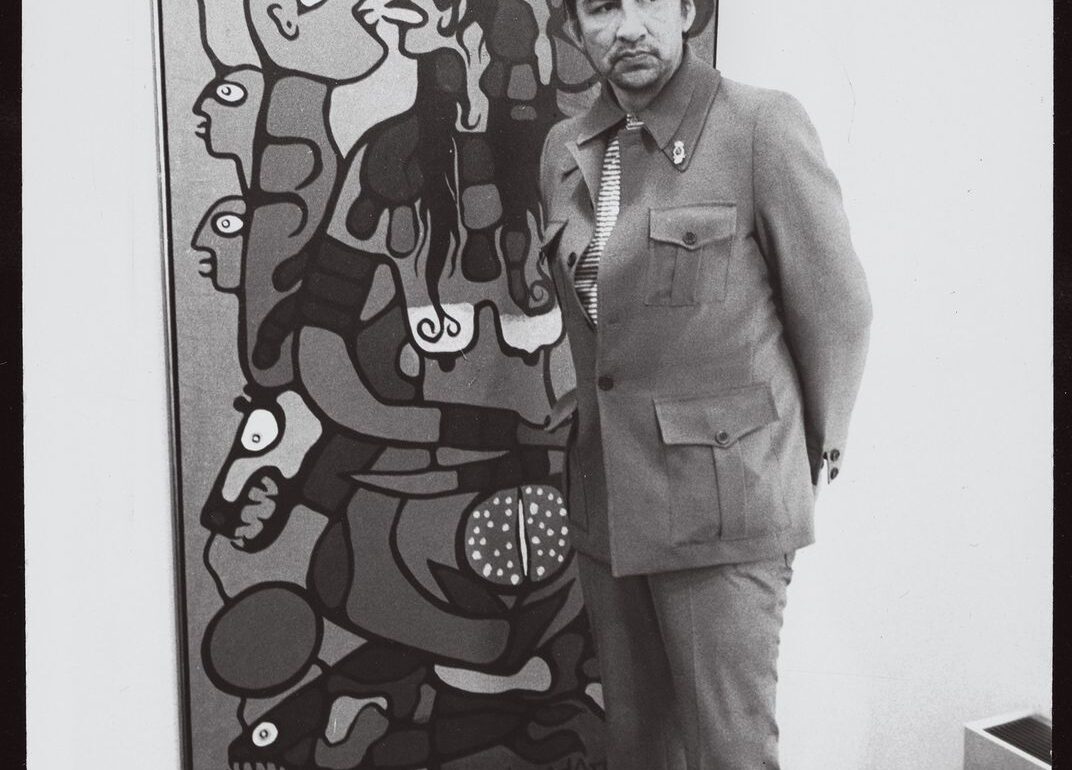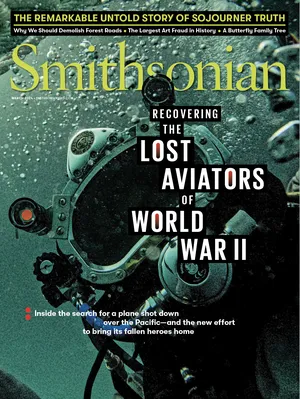Norval Morrisseau was certain. “I did not paint the attached 23 acrylics on canvas,” he wrote in a typed letter in 2001 to his Toronto gallery representative, who had sent him color photocopies of works that had recently sold at an unrelated auction.
Morrisseau, then in his late 60s and suffering from Parkinson’s disease, was the most important artist in the modern history of Canada’s Indigenous peoples—the “Picasso of the North.” He had single-handedly invented the Woodlands school of art, which fused European and Indigenous traditions to create striking, vibrant images featuring thick black lines and colorful interiors of humans, animals and plants, as though they had been X-rayed and their insides were visible and filled with unusual patterns and shapes. He was one of the first Indigenous painters to garner national attention and the first to have a solo exhibition at the National Gallery of Canada in Ottawa. “Few exhibits in Canadian art history have touched off a greater immediate stir,” swooned the Canadian edition of Time magazine after Morrisseau’s sold-out 1962 debut exhibition in Toronto.
By 2001, Morrisseau paintings routinely fetched thousands of dollars on the market. The works he now denied having painted were no exception. The auctioneer had advertised them as being from Morrisseau’s hand and claimed to a reporter writing about the dispute that, though he had obtained the paintings from an obscure seller, he had no reason to doubt their authenticity—he had already sold 800 of them without a single buyer’s complaint.
Morrisseau, though justifiably incensed, wasn’t surprised that imitations of his work were being sold as authentic on the open market. As early as 1991, the Toronto Star reported the artist was complaining about being “ripped off” by fraudsters. But for years Canadian law enforcement did little to investigate the artist’s claims that forgers were imitating his work. Eventually, in the face of this inaction, Morrisseau’s lawyers advised him to notify galleries and auctioneers that they were selling fakes and warn them that they could be the subject of a court injunction, civil action or criminal complaint. Still the sales went on.
It wasn’t until this past year, more than 15 years after the artist died from complications related to Parkinson’s, that an unlikely consortium of investigators, led by a homicide cop from the small city of Thunder Bay, Ontario, finally exposed the scheme to defraud Morrisseau. Not even the artist himself could have imagined the scale of the fraud, which in both the number of forged paintings and the profits made from their sale was likely the biggest art fraud in history—not in Canada or North America but anywhere in the world.
Morrisseau was born in the early 1930s. Consistent with Anishinaabe traditions, he was raised by his maternal grandparents on a reserve near Thunder Bay belonging to the Anishinaabe. Reserves were (and largely remain) small, poor, unproductive lands where the Canadian government had forced Indigenous people to live. Morrisseau’s grandmother was Catholic, and his grandfather, a shaman, taught him his people’s spiritual traditions. Fusing white and Indigenous cultures, rather than segregating them, would define Morrisseau’s life and art.
When Morrisseau was 6, Canadian officials abducted him and sent him to a residential school. These infamous boarding schools were established by the federal government in the late 19th century. As at their counterparts in the United States, Indigenous students were stripped of their language, culture, community and family ties and were forcibly assimilated into the dominant white, Christian culture. In both countries students also frequently endured physical, sexual and emotional abuse, and Morrisseau later said that he’d endured sexual assault at school—among the experiences that caused lasting psychological and emotional damage, leaving him vulnerable to addictions to alcohol and drugs.
Morrisseau, known as the “Picasso of the North,” at the Pollock Gallery in Toronto, 1975, beside a painting of mother and child—a frequent theme. The Globe and Mail / CP Images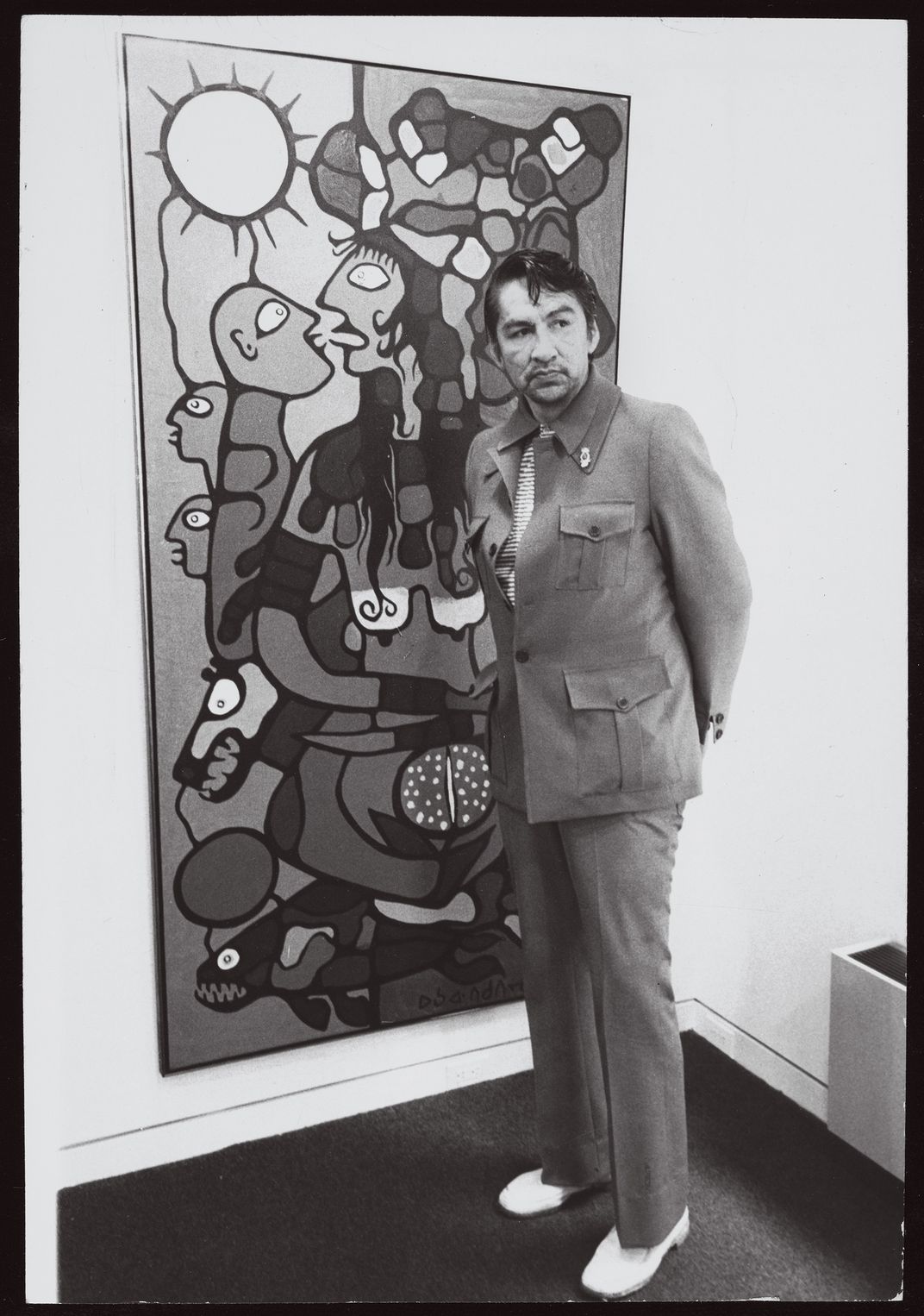
By age 10, Morrisseau had returned to his grandparents’ reserve and become a budding artist, drawing and painting forbidden things. In Anishinaabe tradition, it was verboten to make visual art based on sacred oral traditions and myths. As he grew serious about his work, during his teens and early 20s, he attracted criticism in the community. “A lot of elders and [Anishinaabe] didn’t agree with what Norval was doing and what he was expressing in his paintings,” says Dallas Thompson, an Anishinaabe man who knew one of Morrisseau’s relatives.
At the time, Canada prohibited Indigenous people from practicing their cultures (laws that were enforced until 1951). By putting spiritual material into his work, Morrisseau was defying both colonial and Indigenous pressures while fashioning a new artistic style that injected Anishinaabe ideas into Western art. His big, bold works were filled with swirls of bright paints portraying people and animals as receptacles for ancient spiritual myths. He viewed his art as a sort of therapy, and not necessarily for himself. “Why am I alive?” he once said. “To heal you guys who’re more screwed up than I am. How can I heal you? With color.”
Morrisseau became an instant celebrity in 1962, after a Toronto gallery owner named Jack Pollock (no relation to Jackson) discovered Morrisseau and began displaying his work, marking the first time an Indigenous painter’s work was shown in a contemporary Canadian gallery. The impact on the country’s art world was immediate and enormous. Every painting sold the first day. Eventually, Morrisseau became a practicing shaman and began signing his paintings with the name Copper Thunderbird, given to him as part of a healing ceremony. Before long, his art was included in shows in England, Norway, Germany and the U.S.
In this 1978 diptych, The Storyteller: The Artist and His Grandfather, Morrisseau depicts his maternal grandfather, left, conveying ancestral stories to the artist, right. Crown-Indigenous Relations and Northern Affairs Canada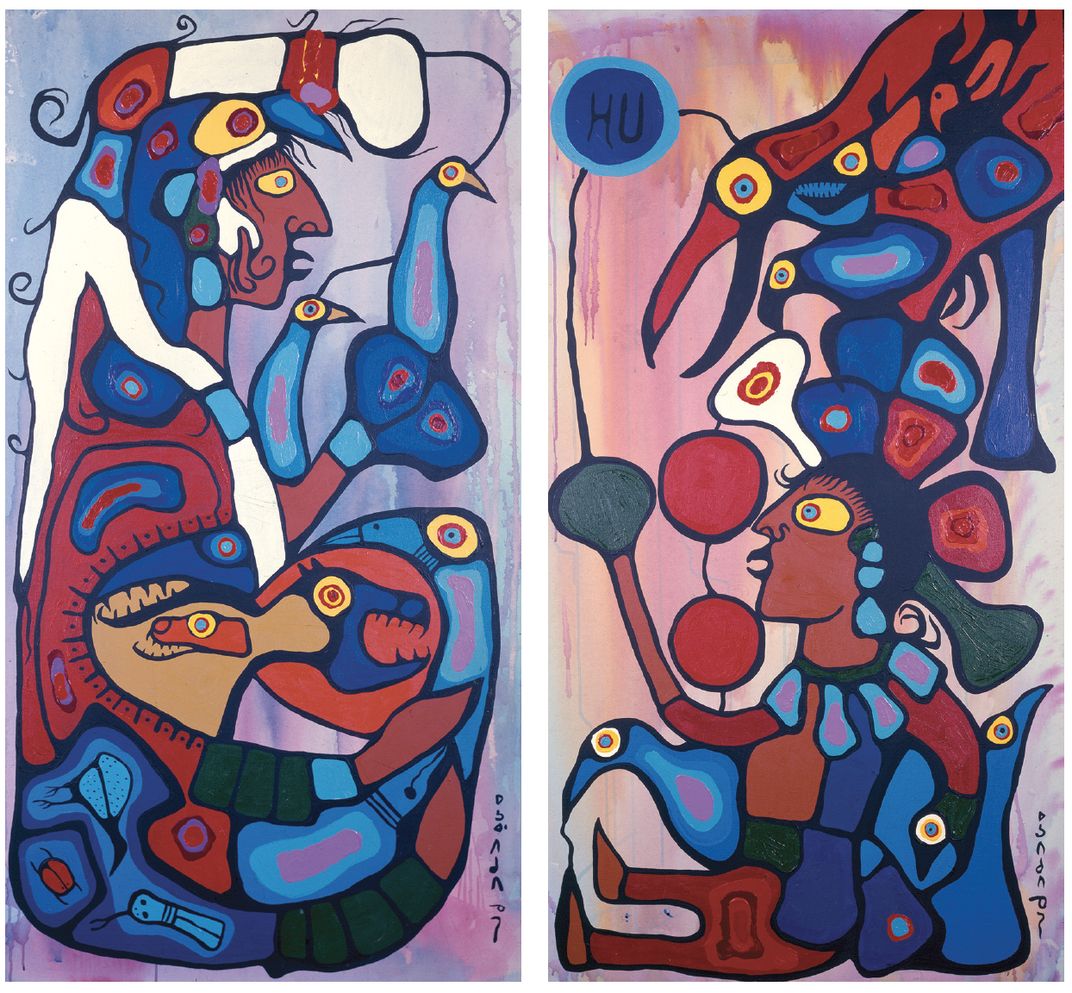
Morrisseau was known to friends and collaborators as soft-spoken but wry. Pollock called him “eccentric, mad, brilliant.” In a National Film Board of Canada short released in 1974, Morrisseau sits among his works wearing a purple shirt and a painted brown vest. He says that a great spirit promised to guide and look after him. “What more protection do I want?” Morrisseau says to the documentarian. “I don’t need to go to a big cathedral.”
Morrisseau, who was bisexual, married a woman and fathered seven children but later became estranged from his family. He was indifferent to celebrity, polite society and the worship of money. He also struggled with alcoholism and hard drug use. Gilbert Cartier, his personal assistant in the late 1970s, recalls that Morrisseau once rolled a joint with a thousand-dollar bill and smoked it. As his addictions deepened in the late 1980s, the artist lived in poverty in Northern Ontario and Western Canada while his paintings commanded huge sums on the market and enjoyed prime placement in the country’s most elite art institutions.
His indifference to bourgeois society sometimes got him into trouble. In a 1989 memoir, Pollock, who died in 1992, recalled that in 1978 Morrisseau began selling paintings to an antiques dealer who also served as a front for the mob. Soon, the mafia were giving Morrisseau unsigned paintings and mechanically produced silk-screen prints and bribing him to sign them.
Others who knew him confirm that Morrisseau was willing to lend his name to works he hadn’t created entirely himself. Cartier recalled to me that the painter’s half-brother Wolf Morrisseau once needed money for eyeglasses, and Morrisseau wondered if the optometrist would accept paintings as barter. When Wolf said the doctor would, Morrisseau had Wolf create some paintings, and then the artist signed the images himself. On another occasion, Morrisseau appeared to have signed his name to works created by one of his protégés.
There is a long tradition, of course, of visual artists using friends, collaborators and apprentices to help produce “original” works. Michelangelo employed assistants to paint the Sistine Chapel. Andy Warhol had a virtual assembly line of helpers, appropriately called “the Factory,” which allowed him to pump out huge numbers of pieces. Morrisseau’s approach was similar.
“Every single artist, when they get to a certain level of productivity—well, not every one but a large body of them—has assistants, apprentices,” says Cory Dingle, executive director of the Morrisseau estate.
Still, according to Cartier, Pollock warned Morrisseau that he was jeopardizing the market with his quasi-frauds, which would surely proliferate. “And that’s exactly what happened,” Cartier says.
In 2001, Canada’s National Post newspaper broke the news that Morrisseau was accusing the auction house outside Toronto of selling fakes. In response, some auctioneers and art retailers impugned Morrisseau’s ability to authenticate his own material, claiming, for example, that Morrisseau didn’t remember what art he had created because his Parkinson’s and drinking had impaired his memory. Morrisseau would make “paintings for food or liquor,” the president of a Toronto auction house told the National Post. “You give him acrylic paint and a canvas and tell him you’ll take him out for dinner and give him some liquor, and he’ll paint.”
But those close to Morrisseau maintained that the artist was not suffering from impaired cognition. Moreover, his attorneys and approved dealers pointed to clear differences between authentic Morrisseau artworks and those the artist was disputing.
For one thing, Morrisseau almost always signed works with his shaman’s name, Copper Thunderbird, in Cree syllabics on the front—never illegibly on the back of the painting, never in English and certainly never with a copyright symbol. All three of these erroneous features were present in some of the fakes. For another, the provenance of the disputed paintings—their history of ownership—was vague and could not be traced to Morrisseau. Sometimes the paintings smelled of markers, which the artist never used. Other paintings had misspelled titles on the back. And the images confused the Indigenous spiritual myths that Morrisseau represented visually. Thompson says, “The paintings don’t make sense.”
For many collectors, though, the look-alikes passed muster. “His art is very easy to forge if you wanted to do that,” says Richard Baker, Morrisseau’s lawyer from 1975 to 1982 and an active member of Canada’s Norval Morrisseau Heritage Society, which the artist founded to look after his interests. “When you look at the two-dimensional quality of Morrisseau’s art, you can tell that. It’s fairly simple; if you’re a skillful forger, you can forge a Morrisseau painting quite well. And it would be very difficult to distinguish from an authentic painting.”
Morrisseau peruses suspected fakes in 2005, four years after founding the Norval Morrisseau Heritage Society, which works to expose fraudulent works. The Estate of Normal Morrisseau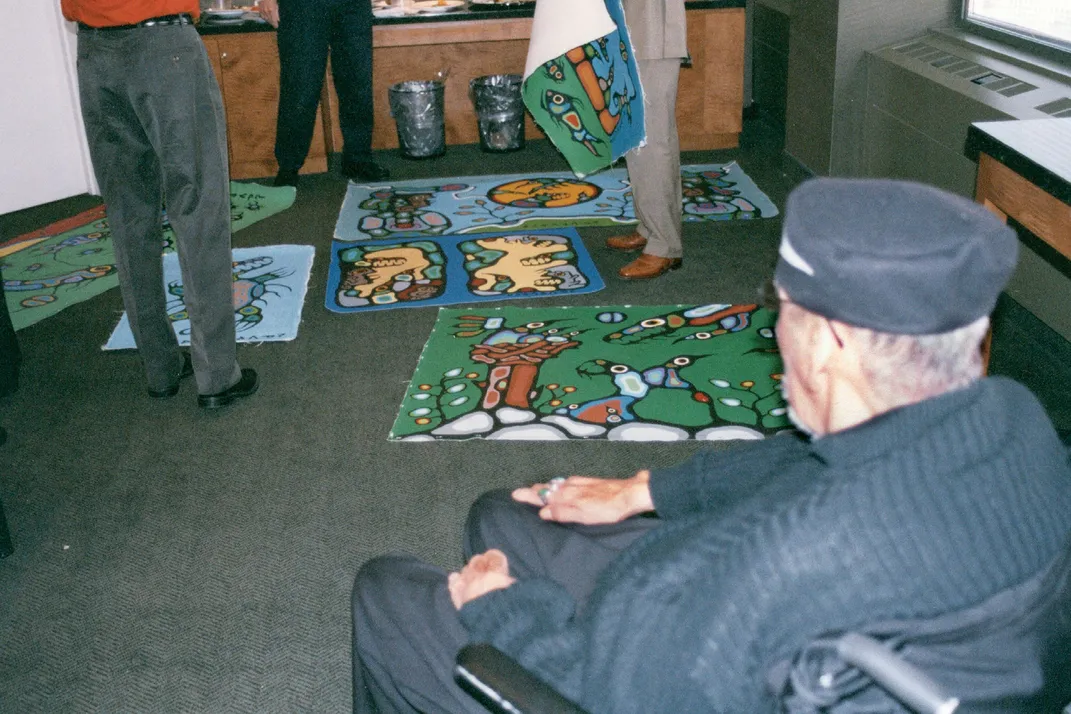
In the last years of his life, Morrisseau filed 15 affidavits identifying fakes; that’s also when he founded the Norval Morrisseau Heritage Society. Between 2001 and 2005, his lawyers sent letters demanding that gallery owners stop selling works the painter claimed he had never seen, let alone created. But by mid-2005, Morrisseau was ill and living in a nursing home. “The only thing I think about is to paint,” he told a reporter. “I just want to paint. There are things in my head that I’d like to get out, but right now it can’t happen.” Two years later, at age 75, he died.
Morrisseau’s death only emboldened his opponents. Auctioneers, gallery owners and collectors who wanted to profit from selling paintings of potentially dubious provenance sued the artist’s authorized dealer, as well as his lawyer and others whose claims of widespread Morrisseau fraud threatened the value of canvases these sellers had owned, had sold or might sell.
Canadian law enforcement opened an investigation into claims of widespread fraud in 2008, looking primarily at the gallery owners who were profiting from the alleged fakes. The Royal Canadian Mounted Police (RCMP)—Canada’s version of the FBI—declared its investigation inconclusive, writing in a report to Thunder Bay police: “Investigators did not identify nor obtain the requisite evidence necessary to support the allegations of criminal activity.”
It appeared that someone outside law enforcement would have to force the issue if there were going to be any progress in exposing the fraud. Fortunately, several buyers were angry to learn that they may have been sold fakes, including a Scottish Canadian singer named John McDermott, who in 2013 sued a gallery that had sold him a disputed Morrisseau. McDermott said that he had conducted his own investigation into the provenance of the painting, which he had come to believe was fake. Moreover, he claimed he could identify the culprits. Among other names, there were two Thunder Bay toughs named Gary Lamont and David Voss, who, he told the courts, produced and resold fraudulent Morrisseaus in large numbers, usually large-scale paintings on paper or canvas like most authentic Morrisseau works.
According to later comments by Thunder Bay police, Lamont and Voss were veterans of the drug underworld in Thunder Bay, a city of roughly 100,000 that has routinely endured Canada’s highest rates of homicide, particularly involving Indigenous peoples. Violent crimes are common, amid a struggling economy, a housing crisis, an opioid epidemic and persistent racial animus among many locals against Indigenous people arriving from reserves across Northern Ontario.
According to McDermott, the men sold fakes online to collectors, dealers and auction houses—indeed, it was Voss who had supplied the auction house outside Toronto with the fakes that aroused Morrisseau’s attention in 2001. McDermott dropped the claim for unknown reasons—and his representatives did not respond to numerous requests for comment—but other auctioneers, collectors and buyers began looking to the courts to adjudicate their disputes as well.
One of them was a rock star.
Kevin Hearn plays keyboards for the band Barenaked Ladies, best known in the United States for the 1998 megahit “One Week” and for writing the theme song for the sitcom “The Big Bang Theory.” The band has sold more than 15 million records, and its success allowed Hearn to get serious about art collecting. He had long appreciated Indigenous art and was moved that Morrisseau spoke of using his painting as a way of healing others. In 2005, Hearn purchased a Morrisseau painting called Spirit Energy of Mother Earth for 20,000 Canadian dollars from a Toronto gallery that assured him it wasn’t one of those frauds Hearn had heard rumors about. (In fact, two years earlier, Morrisseau had sent the gallery a letter informing it that several of its “Morrisseaus” were fake.)
In 2010, Hearn lent the canvas to the Art Gallery of Ontario for a show he also helped curate. Days later, he received a call saying that the gallery’s head curator had ordered the painting removed. It was a fake.
A soft-spoken and unassuming man, Hearn says his “heart sank” at the news. He felt personally violated and angry that Morrisseau was being exploited. He sued the gallery in 2012 and, together with his lawyers, spent the next several years investigating Voss and Lamont as the ringleaders of a wide-ranging scam.
Kevin Hearn, rock instrumentalist and self-trained art fraud investigator, at his home in Toronto with an authentic Morrisseau: Shaman’s Dream, 1995. Markian Lozowchuk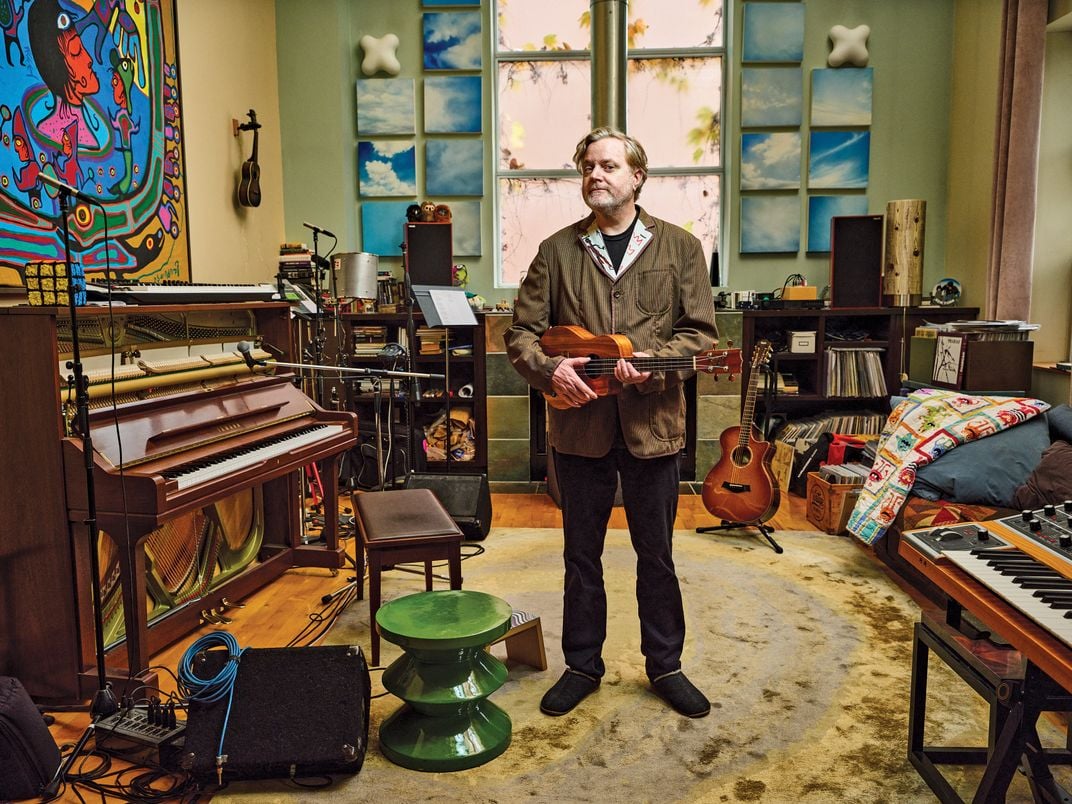
Between 2012 and 2015, Hearn practically became a part-time private investigator as he and his lawyers interviewed more than 200 people, primarily around Thunder Bay, including associates of Voss and Lamont, other buyers who thought they had been duped, and Morrisseau’s close friends and family members.
They learned that Lamont and Voss, white men both, claimed to know Morrisseau—Lamont’s father had been friends with Morrisseau, and the artist had even given him several original paintings. In a court filing, Voss said that he, too, had met Morrisseau, at a friend’s house in Thunder Bay in the 1980s, and that he began purchasing authentic paintings from friends who lived in or near reserves.
Hearn’s investigative team found that, for years, Lamont and his wife had helped oversee a group home for Indigenous youth. Dallas Thompson, the Anishinaabe man who knew a Morrisseau relative, said Lamont operated the home as a virtual factory for producing fake Morrisseau paintings. Under Lamont’s direction, youths and other Indigenous people in Thunder Bay were paid—or forced at threat of violence—to create Morrisseau look-alikes by the hundreds. Then Thompson, Voss and Lamont put them up for sale on eBay or drove across Canada, selling them to auctioneers and dealers for resale. Thompson, who says he gathered the courage to speak against Lamont years after being assaulted by him, told me that he alone witnessed or participated in the creation of at least 400 Morrisseau fakes.
Dallas Thompson, who has testified against the fraudsters, still lives in Thunder Bay with his four children. Still from There Are No Fakes / Cave 7 Productions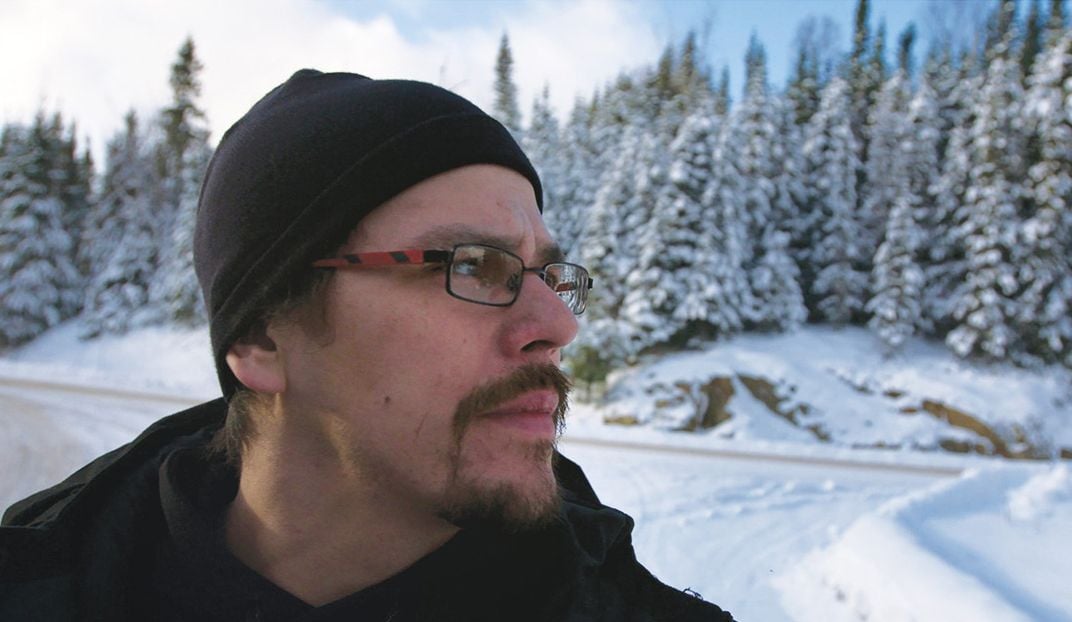
Gary Lamont at the Calgary Zoo in 2006. In 2019, authorities raided his house in Thunder Bay and removed 100 suspicious works allegedly by Morrisseau. Dallas Thompson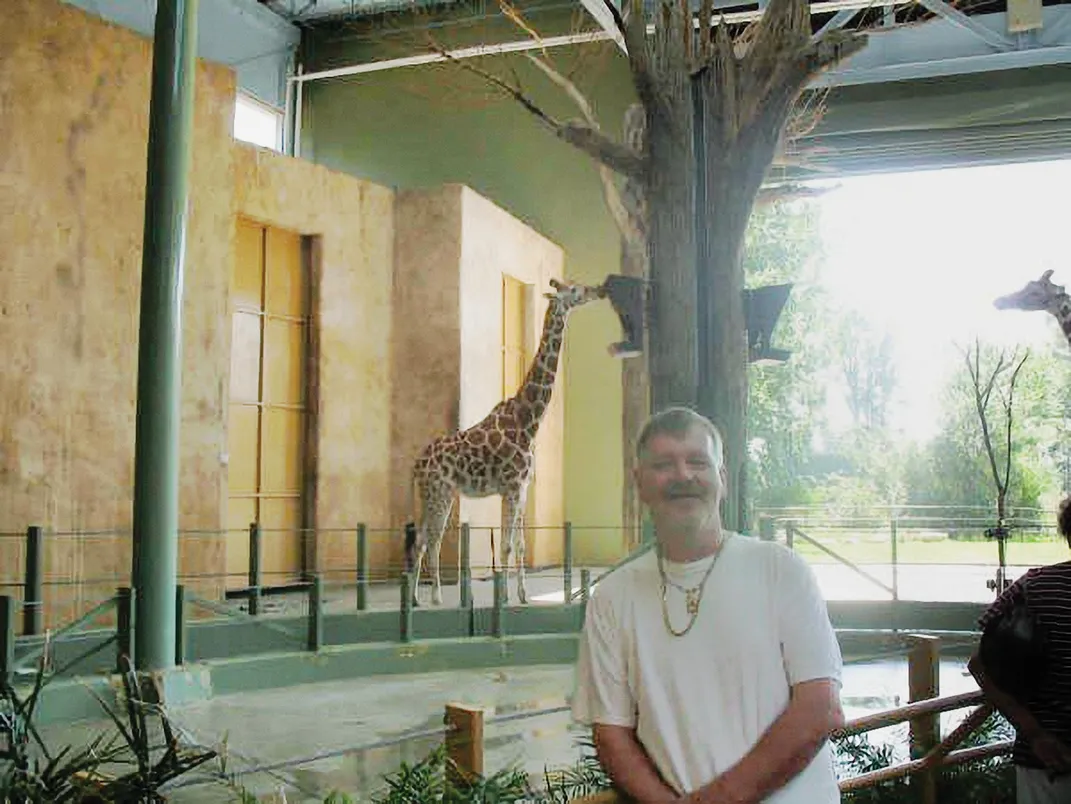
Authorities have charged Benji Morrisseau, Norval’s nephew and a well-known Thunder Bay area artist, with helping create forgeries. Benji has denied any involvement. Still from There Are No Fakes / Cave 7 Productions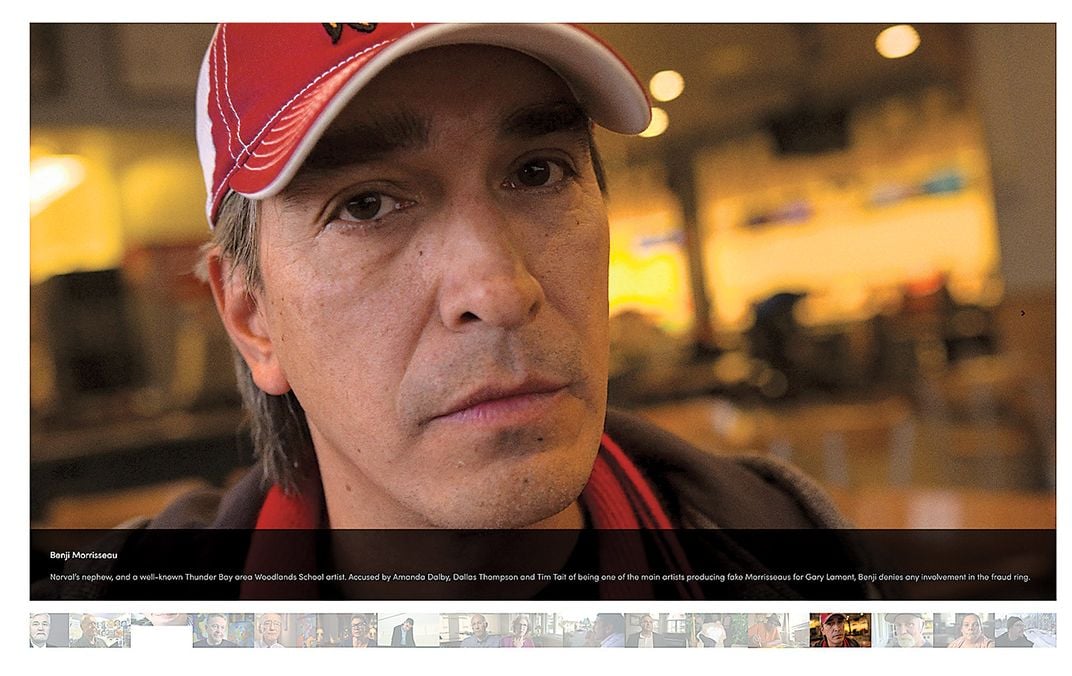
At a hearing during his lawsuit against the gallery, which began in October 2017, Hearn supplied experts who testified that the painting he’d been sold was a fraud. Thompson testified as well. But the defense offered countervailing evidence, including a handwriting expert who testified that, in his opinion, the signature on the painting was almost certainly Morrisseau’s, which caused doubt in the judge’s eyes. The burden was on Hearn, as the plaintiff, to prove that the painting was a fake—and, according to the judge, Hearn didn’t have the proof. In his 2018 decision, the judge acknowledged that a fraud ring existed in Thunder Bay, but he said the ring’s existence didn’t prove the individual painting Hearn purchased was a fake; it was merely contested. The judge granted that Hearn and his experts might be right but said they might be wrong, too, and truth is “not always attainable in the layperson’s sense.” He concluded that, “A tie goes to the defendants.”
Stymied by the courts, Hearn continued to pursue his cause outside of them. He contacted an old friend, a filmmaker named Jamie Kastner, who did his own reporting and put the results in a 2019 documentary, under the ironic title There Are No Fakes. The film brought to a larger audience the bewildering saga of the Morrisseau hoaxes, the various lawsuits, and the allegations involving Voss and Lamont. There Are No Fakes was powerful, thorough and persuasive, but it received little notice outside the province of Ontario.
Fortunately, one unlikely viewer knew all about Voss and Lamont—and he saw in the film’s evidence a way to finally take them down.
Jason Rybak, 48, has been a cop since 2000 and is only six years away from retirement. We met on an August morning in 2023. Rybak has a shaved head and neat facial hair and wore a blue suit, a pink shirt and a tie. After stopping at a Tim Hortons drive-through for a cup of tea and touring Thunder Bay’s rough spots in his car, blasting rock music, we made our way to the provincial police station.
Until 2019, Rybak knew little of Morrisseau. After all, he works murders, not paintings. In fact, it was a decades-old homicide that brought the Morrisseau fakes to his attention: a cold case from the mid-1980s, when a 17-year-old named Scott Dove was murdered in Thunder Bay. None other than Gary Lamont had been a prime target of the investigation. But police lacked evidence to charge him, and the case remained unsolved. Rybak stayed in touch with Dove’s mother, however, and she suggested that he watch a documentary that mentioned her son. Rybak watched There Are No Fakes in late 2019. Afterward, he says, “I started looking into it, hoping that this would lead us to solve the murder of Scott Dove. But it never really went down that trail—it went right into this fraud.”
Jason Rybak leafs through old case files at the Thunder Bay Police Service. He began investigating the Morrisseau frauds in 2019 after watching There Are No Fakes. Jenn Ackerman + Tim Gruber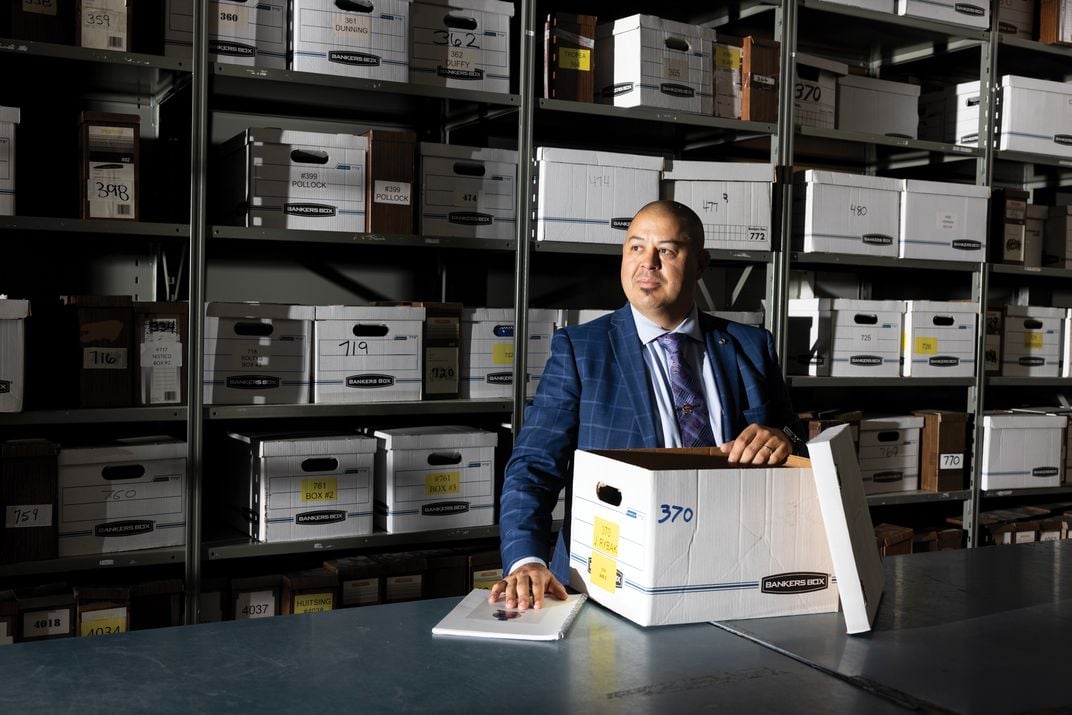
The first phone call Rybak made was to Hearn, whose lawyers provided Rybak with information about Lamont and Voss. And the numerous court battles—involving Hearn; McDermott; and other buyers, collectors and gallery owners—meant extensive documents were available online, leaving Rybak a list of interview sources. With the Thunder Bay Police Service understaffed and focused on safeguarding an infamously troubled city, Rybak called in the provincial police for additional resources. He also contacted the FBI’s Art Crime Team, to help local law enforcement learn how to structure the investigation and which experts to consult in distinguishing between authentic Morrisseaus and look-alikes.
Instead of investigating the sellers of Morrisseau fakes, as the RCMP had done, Rybak focused on the forgers, beginning with people like Thompson. He also zeroed in on buyers who seemed to know who had been paid or approached to make fakes, where the art supplies were purchased, and how the paintings were sold. To Rybak’s surprise, he had little trouble loosening tongues. While some buyers were embarrassed they had been hoodwinked, they generally weren’t cagey, unlike most of his interviewees in homicide investigations. “It was weird, because everyone we dealt with liked us and was forthcoming,” Rybak says. And some of them openly pointed to Lamont and Voss as the main culprits behind the scheme.
More challenging was determining whether auctioneers, gallery owners, buyers and even the painters-for-hire themselves had participated knowingly in the scam or simply been paid to paint without knowing the works were being advertised as Morrisseau originals. Complicating matters, Rybak says, was that the courts had mistakenly ruled that certain fakes were authentic—which collectors, gallery owners and sellers sometimes pointed to in legitimizing their fakes.
Eventually, Rybak figured the best way forward was to reconstruct Morrisseau’s nomadic life, like a biographer, interviewing anyone the painter had encountered. He learned that Morrisseau couldn’t have pumped out the prints in the 1970s and 1980s that certain galleries and owners were claiming because during these years he wasn’t working much—or, when he was, he was painting in a different style. The cops became de facto art critics and historians, able to discern between Morrisseau’s distinct techniques during different periods in his life. Soon, they were able to spot fakes from the real thing. “They’re noticeably different, except for a few,” Rybak says. Some paintings were listed as having been painted by him after 2007—but Morrisseau “didn’t paint a lot when he was dead,” Rybak says.
Computer scientists working with the Norval Morrisseau estate have created an A.I. tool to help determine authenticity. The more squares in dark red, the higher the probability of fraud. The Estate of Norval Morrisseau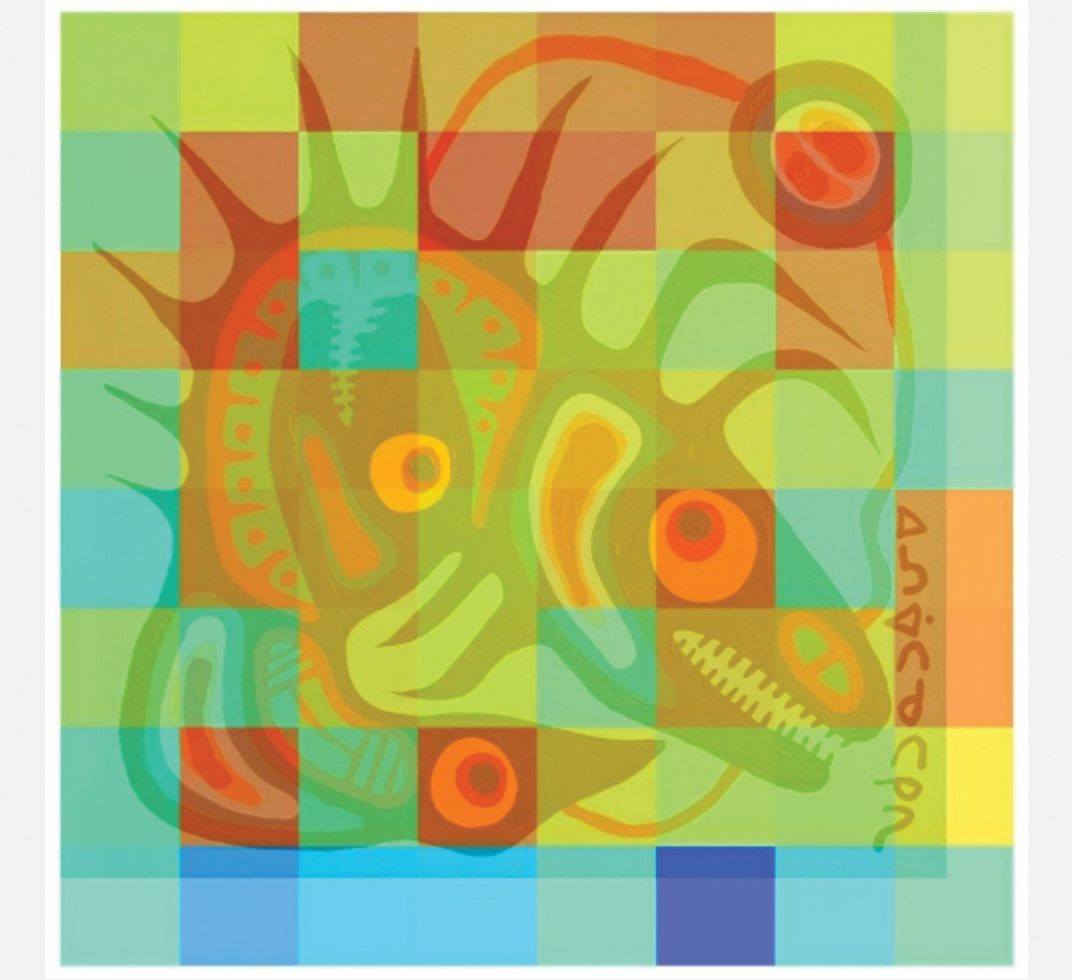
Rybak determined that Voss hatched the plan around 1996, forging paintings and selling and consigning them before amassing a team to produce fakes across Ontario and Alberta. When Rybak interviewed Voss’ ex-wife, he recalls, “She said she’d been waiting for 25 years” for police to arrive at her door. Rybak concluded that by 2002, Lamont—who Rybak says may have been comrades with Voss in the drug underworld—borrowed the idea for himself and started a second ring doing the same thing.
Lamont had photos of himself with Morrisseau on his website, which may have calmed the nerves of prospective buyers. Lamont sold the paintings online to people all over the word, which significantly expanded the operation. Another acquaintance of Lamont and Voss, who remains unnamed by police, because he died before he could be criminally charged, had passed information about the scam to people in southern Ontario, which led to a third fraud ring that appeared around 2008, generating yet more fake art. For years, Rybak says, these three overlapping rings manufactured perhaps tens of thousands of fakes and spread them around the globe, generating tens of millions of dollars for themselves, auctioneers and gallery owners. Rybak established that there was an entire Morrisseau industry—one that earned into the nine figures. And Norval Morrisseau never profited a nickel from it.
Tracking down every forgery was impossible—there were simply too many already out there. In late 2019, Thunder Bay police raided 100 works from Lamont’s Thunder Bay house, then found another stash in Voss’ home nearby. In 2022, Rybak led a haul in Calgary that netted yet another 300—enough that a 24-foot van wasn’t big enough to carry them all, and he had to locate a larger truck. At each location, Rybak and his colleagues discovered, assembly lines of people had been producing Morrisseau look-alikes.
Rybak found that top art institutions had fallen for the scam. In court, collectors pointed to these institutions as proof that disputed Morrisseaus were indeed authentic. According to Rybak, the Canadian Senate building had a fake, and he believes that at least one of the 23 Morrisseau paintings and prints held by the Smithsonian’s National Museum of the American Indian is a fake.
At the Smithsonian’s National Museum of the American Indian, a disputed canvas, Lily of the Mohawk, 1979, is not on display and awaits further testing. NMAI, SI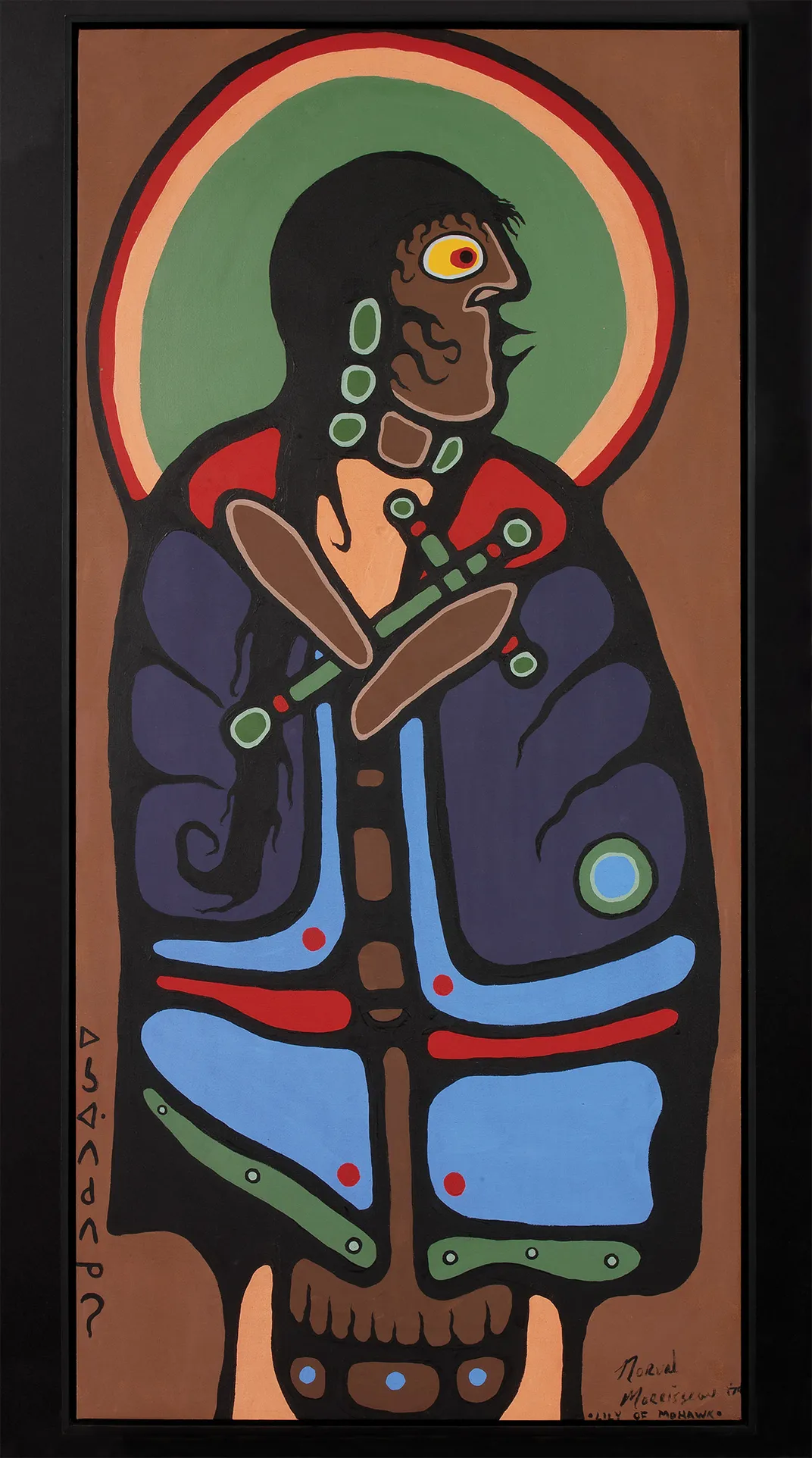
“There is no one straightforward way to go about answering a question about authentication,” Gwen Manthey, a conservator at the Smithsonian American Art Museum, told me. Manthey herself is one of a half-dozen painting conservators at the institution, part of whose job includes researching and vetting newly accessioned objects. She explained that the Smithsonian asks its donors about the provenance of the works it receives, and the institution does not believe the donor of the Morrisseau collection had reason to doubt their authenticity. None of the questioned Morrisseaus are on display at Smithsonian museums, since proving their actual provenance is extremely difficult. Rachel Shabica, supervisory registrar at the National Museum of the American Indian, said, “I would imagine that most large museums have collections of things that they’re not 100 percent sure about, particularly as an institution that’s as old as the Smithsonian.”
There had been no immediate plans to display the disputed painting before the Smithsonian got wind of these allegations, in 2019. Ultimately, Rybak’s investigation took two-and-a-half years and involved nearly 100 law enforcement officials, who interviewed more than 270 people. In March 2023, he and other officials in Thunder Bay announced that they had arrested eight people at the center of the fraud rings. Among the culprits were Lamont and Voss. Police filed 40 charges, among them forgery, fraud and possessing stolen property with the intent of selling it. In the backdrop at the press conference announcing the charges were 10 of the more than 1,000 forged Morrisseaus police had seized so far. The precise number of total fakes manufactured over the years is unknown but could be more than 10,000, Rybak says, with the criminal profits amounting up to $100 million.
In December 2023, Lamont pled guilty to one count of forgery and one count of defrauding the public above $5,000, and he was sentenced to five years in prison. In response, one Indigenous leader said the forgeries had criminally exploited First Nations artists and threatened to “delegitimize the culture further.”
At his sentencing hearing, Lamont said that he was “very sorry and remorseful of what I’ve done and take full responsibility.” Rybak expects the plea to be the first of many; trials for Voss and the other suspects are scheduled to begin this year and next. Voss has been averse to talking with reporters and couldn’t be reached for comment.
Norval Morrisseau in Robson Square in downtown Vancouver, 1999. Morrisseau identified as a shaman artist and drew on out-of-body experiences to create his art. Alex Waterhouse-Hayward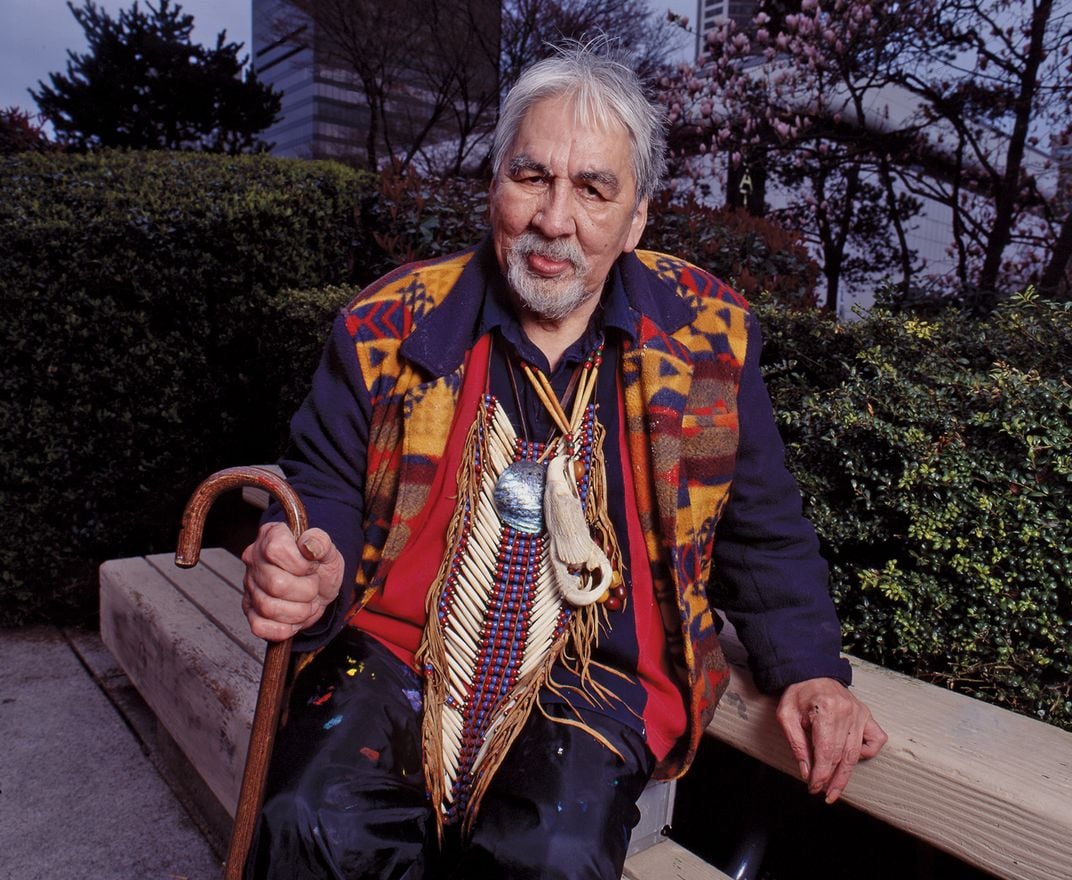
Hearn, the collector whose initiative helped investigators get to the bottom of the scam, believes that Morrisseau’s identity as a part of a marginalized group was helpful to the crooks. The success of the fraud ring, he says, “illustrates the perpetuation of the problem with the relationship between Indigenous people and colonizers.” The fraudsters were betting on a lack of outrage when Morrisseau’s reputation was tarnished. Rybak agrees and adds that the scammers were aware that Morrisseau “never kept a résumé of painting.” The forgers “knew there was no way, in their view, that anybody would ever be able to figure out what he actually painted.”
Meanwhile, Rybak and Hearn say that prospective buyers regularly call or email asking for guidance in authenticating this or that painting, worried they may have sunk large sums of money on worthless imitations. Some buyers were bilked out of their life savings.
For the fraudsters, of course, the scheme was nothing more than a way to make money. But the devastation to honest buyers, to Morrisseau and his legacy, to Indigenous culture, and to Canadian art writ large is incalculable. Morrisseau’s works were not meaningless paintings but precious, irreplaceable examples of the Anishinaabe experience in Canada and the world. As Thompson told me: “Every painting is supposed to be an insight into my culture.”
This post was originally published on this site be sure to check out more of their content



